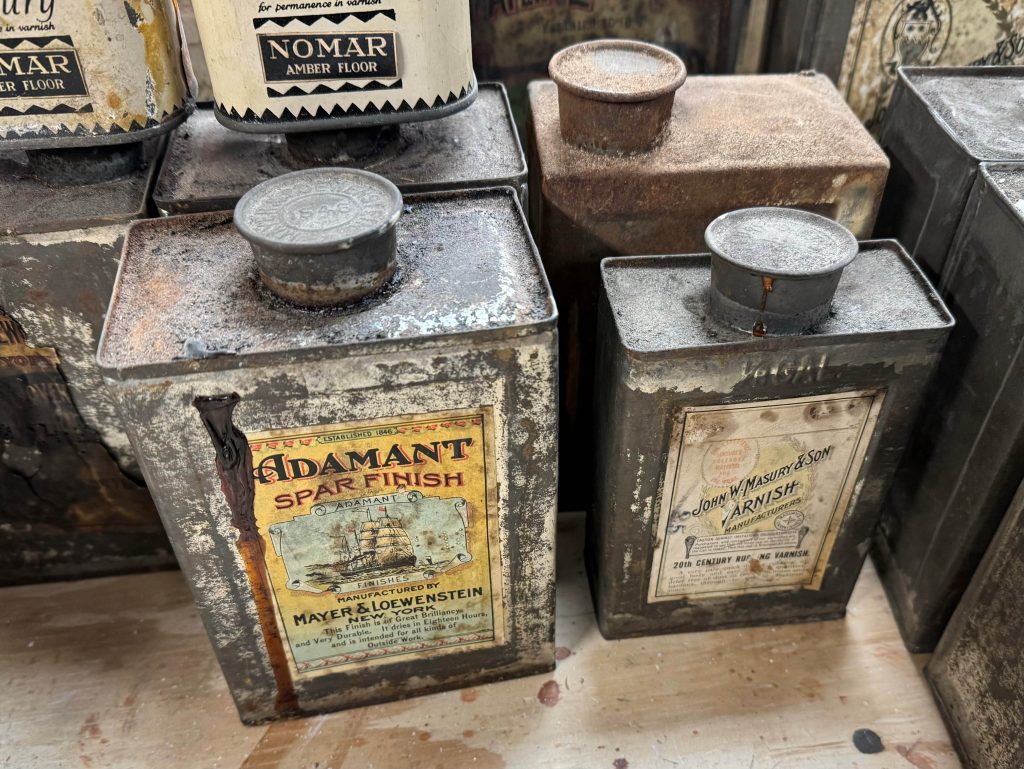
We all know there is plenty of advice on the internet and that some of it is very good and some of it is poor. One topic that I encounter frequently as a preservation consultant is the care of historic woodwork and furniture and the apparent need to feed, nourish or moisturize wood. Unfortunately, most of the information circulating on Facebook and the internet about this is quite incorrect. Although I may be a voice in the wilderness, here is my attempt to set the record straight.
Your woodwork does not get hungry. It does not get thirsty. It does not need to be fed. You do not need to give it a drink. Examples, testimonials and recommendations of people doing so are legion but are often misguided. Moisture in your woodwork or furniture is a function of the ambient humidity in its environment. Humid air means wood has a higher moisture content and drier air means wood has a lower moisture content. It is as simple as that. What is important is to limit the frequency and amplitude of swings in humidity and temperature because this cycle of expansion, contraction and moisture content will cause wood to swell and contract and can degrade historic finishes or cause cracks and checking. It is important to moderate these swings to the extent you are able by limiting changes in temperature and humidity levels.
“Feeding” your woodwork or furniture with linseed oil or orange oil will not replenish moisture. After all, how can oil replace water? Although it can slow the evaporation and absorption of water, it does not replace water in wood.
There are two types of oil commonly used on woodwork: Drying oils and non-drying oils.
- Drying oils: These include linseed oil and tung oil. They are called drying oils because the molecules cross link or polymerize when exposed to oxygen. That is, they harden or form a film. This is why they are used in varnishes, paints and other finishes. These oils, and especially linseed oil, can be harmful because continued use will saturated the wood and, when these drying oils oxidize over time, they will turn dark or black. This is irreversible. The real tragedy is that this process can take years or even decades. People will swear up and down that this is untrue, but this is only because they haven’t been around long enough to witness the entire process. Ask any furniture conservator what they have seen. Indeed, many museums have wonderful pieces of furniture that have been ruined because they were repeatedly sopped with linseed oil decades ago and subsequently have turned dark or even black. The key word to remember here is CONTINUED use. Although drying oils were used historically to make varnishes, paints or other finishes, it is the continued, repeated and liberal use of drying oils that saturates the wood and can cause damage down the road. If you must apply oil to wooden objects, tung oil is preferable to linseed oil because it will not turn nearly as dark.
- Non-drying oils: These include orange oil and lemon oil, which are often mixed with beeswax. They are called non-drying oils because they do not cross link like linseed oil and remain liquid or semi-liquid. Although they aren’t harmful like drying oils can be, they don’t nourish or feed wood. When used on vanished wood they sit on top of the existing varnish and, over time, will form a gummy film after the volatile elements have evaporated. The gummy film can be quite thin but still will attract dirt and grime and create a mess that can be especially nasty on molding and in corners. To combat this people will apply more orange or lemon oil to revive it. This does restore a shine temporarily, but the process continues. Non-drying oil should never be used on unfinished wood because the oily gunk will penetrate the wood and cannot be removed.
What are we to do to care for woodwork and furniture? If the varnish is in intact, a paste wax polish (preferably with no orange oil) on a clean surface is best. There are plenty of good products on the market that work well. I make my own paste wax using an 1850s recipe that I tint to match the color of the woodwork. This is one case where what they used years ago continues to work today. A yearly coat of wax is all that is needed to protect your woodwork or furniture or architectural millwork.
You should be especially careful if the varnish is badly degraded or there is no varnish at all, as improper cleaning or finishes can soak into and stain the wood. Contacting a trained conservator or consultant is the best place to start if this is the case.
One more thing to remember. Never use anything out of an aerosol can since these sprays contain silicates which can saturate and contaminate the finish and can’t be removed. Natural wax finishes are the way to go.
I know there are people reading this who will strongly object and assert that I am uninformed and completely incorrect. They will claim they’ve been using products containing linseed oil to condition their woodwork for years with no ill effects. I have made my case and you are free to do what you wish. However, if have any doubts and are curious, feel free to Google the American Institute for Conservation of Historic and Artistic Works and see what they say. Or, keep saturating your woodwork with linseed oil and hope for the best.
0 Comments